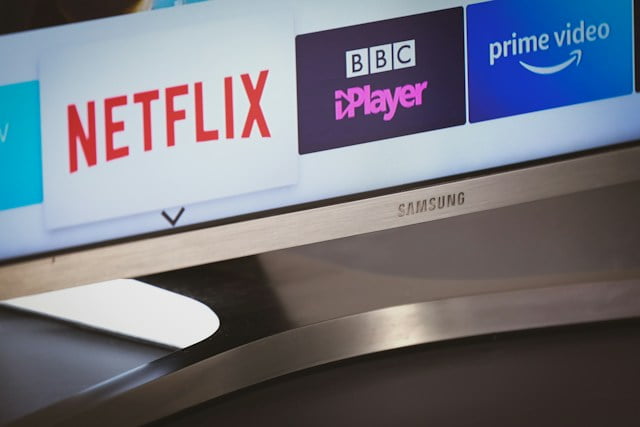If your Samsung Smart TV has been acting up lately—maybe it’s lagging, apps keep crashing, the picture doesn’t look right, or you can’t stay connected to Wi-Fi—you’re not alone. As advanced as smart TVs have become, they’re still electronic devices, and every now and then, they need a little maintenance to keep things running smoothly.
One of the best ways to bring your Samsung Smart TV back to its optimal performance is by performing a reset. But don’t worry—resetting your TV doesn’t always mean losing everything or diving into complicated tech jargon. In fact, there are several types of resets, ranging from quick and simple to more comprehensive solutions.
Whether you just want to fix a small glitch or need a full reset to solve a persistent issue, this guide walks you through everything step by step. Let’s explore how to safely and effectively reset your Samsung Smart TV and get it performing like new again.
Why Would You Need to Reset Your Samsung Smart TV?
Resetting your TV might sound drastic, but in many cases, it’s the most efficient way to solve common problems without having to call in tech support or replace the device.
Here are some telltale signs that your Samsung Smart TV could benefit from a reset:
- Apps keep freezing or closing unexpectedly
- TV runs slowly or becomes unresponsive
- Wi-Fi disconnects frequently or won’t connect at all
- Picture or sound quality suddenly looks off
- Random restarts or glitches during playback
- Settings have gotten out of control or hard to manage
In some cases, a simple restart will do the trick. Other times, a more thorough factory reset may be needed to fully wipe out whatever’s causing the issues. The good news? You have options—and we’ll cover all of them.
Start Small: Try a Soft Reset First
Before you dive into more advanced reset methods, it’s a good idea to try a soft reset—basically, a reboot. This helps clear temporary system glitches without deleting any data, apps, or settings.
Here are two easy ways to do it:
Option 1: Restart Using the Remote
- With the TV turned on, press and hold the Power button on the remote control.
- Keep holding until the TV turns off and back on by itself (usually takes about 5 seconds).
- Release the button when you see the Samsung logo on the screen.
This forces the TV to restart completely, not just go into standby mode.
Option 2: Power Cycle the TV Manually
- Turn off the TV.
- Unplug it from the wall outlet.
- Wait for about 60 seconds.
- Plug it back in and turn it on.
It may sound basic, but many users find this clears up minor bugs and responsiveness issues without needing any deeper resets.
Having Wi-Fi Issues? Try a Network Reset
If your Samsung Smart TV isn’t connecting to Wi-Fi—or keeps dropping the signal—it might not be the router. Sometimes, the network settings on the TV get corrupted or confused, especially if you’ve recently changed your internet provider or moved your TV.
Luckily, a network reset is simple:
- Press the Home button on your remote.
- Go to Settings.
- Scroll to General.
- Select Network > Reset Network.
- Confirm when prompted.
Once this is done, you’ll need to reconnect to your home Wi-Fi network and re-enter your password. If you’ve been dealing with a stubborn connection issue, this often clears it right up.
Picture Looks Off? Sound Not Right? Do a Quick Reset
Sometimes, it’s not the whole TV acting up—just the visuals or audio. If you’ve messed around with the brightness, contrast, or surround sound settings and things now look or sound weird, resetting those individual settings can help without touching everything else.
How to Reset Picture Settings
- Press Home on your remote.
- Go to Settings > Picture.
- Scroll to Expert Settings.
- Choose Reset Picture.
This will revert all picture settings—like color tone, contrast, brightness, and sharpness—back to the default factory levels.
How to Reset Sound Settings
- Press Home on the remote.
- Head to Settings > Sound.
- Go to Expert Settings.
- Select Reset Sound.
These quick resets are a great first move if your content sounds too bass-heavy, muffled, or distorted after playing around with equalizer settings.
The Big Fix: Performing a Factory Reset (Hard Reset)
If nothing else has worked—apps keep crashing, the screen keeps freezing, or you just want to start fresh—a factory reset is the most powerful option. This erases everything: your apps, saved networks, account info, custom settings, and preferences.
Use this method if your TV has persistent issues that simpler resets don’t fix.
Here’s how to do a full factory reset:
- Press the Home button on your remote.
- Go to Settings.
- Scroll down to General (or General & Privacy on newer models).
- Select Reset.
- Enter your PIN. If you never set one, the default is 0000.
- Confirm the reset.
After the reset, your TV will reboot just like it did the first time you took it out of the box. You’ll need to go through the initial setup process again, including signing into your Samsung account, setting up Wi-Fi, and reinstalling your favorite streaming apps.
What If You Don’t Have the Remote?
Lost your Samsung remote or it stopped working? Don’t worry, you can still reset your TV using a couple of clever methods.
Method 1: Use the Physical Buttons on the TV
Most Samsung TVs have a Control button located under the TV or on the back. Depending on the model, this may be a single button that allows you to navigate through basic options by short and long presses.
To reset using physical buttons:
- Turn the TV on.
- Press and hold the Menu button (or center of the control pad) until the screen shows the reset options.
- Navigate using the up/down controls and confirm to reset.
Method 2: Use the Samsung SmartThings App
- Download the SmartThings app from the App Store (iOS) or Google Play Store (Android).
- Open the app and connect to your Samsung TV.
- Use the virtual remote inside the app to navigate to Settings.
- Perform the factory reset as you would with a physical remote.
This is a great backup if your original remote is broken or misplaced.
Important Things to Keep in Mind Before You Reset
Before you jump into a factory reset, take a few moments to prepare. It’ll save you some time and frustration later on.
Backup Login Info
Make sure you know your Samsung account credentials and the passwords for your streaming apps like Netflix, Hulu, or Disney+. You’ll need to log back into all of them after the reset.
Record Your Favorite Settings
If you’ve spent time customizing picture or audio settings to your liking, take a photo of those settings on your phone. That way, it’s easy to reapply them later.
Check for Software Updates First
Sometimes, the issue you’re dealing with can be solved with a simple firmware update. Before doing a reset, try this:
- Go to Settings > Support.
- Select Software Update.
- Choose Update Now.
If your TV is behind on updates, this alone might fix the problem.
After the Reset: Rebuilding Your Smart TV Experience
Once you’ve completed the reset, your Samsung Smart TV will restart like it’s brand new. While that’s great in terms of performance, you will need to go through a few steps to get everything back to how you like it.
Reconnect to Wi-Fi
- During the setup, you’ll be asked to select and connect to your home Wi-Fi network.
- Make sure your router is nearby for a strong signal.
Log Into Your Samsung Account
- Your Samsung account helps sync settings and access smart features.
- If you have SmartThings devices, they’ll reconnect through this account.
Reinstall Your Favorite Apps
- Go to the Apps section.
- Use the search function to find and reinstall streaming apps, games, and other services.
- Sign back into each one manually.
Adjust Picture and Sound Settings
- Use your previously saved settings or experiment to find the best combination.
- Samsung’s preset modes (like Movie, Natural, or Dynamic) can be good starting points.
Troubleshooting After a Reset
Sometimes, even after a reset, things don’t go perfectly right away. Don’t panic—here are a few common issues and how to fix them.
TV Still Won’t Connect to Wi-Fi?
- Double-check your Wi-Fi password.
- Restart your router and modem.
- Make sure your TV is within range.
- If nothing works, try another network reset.
Can’t Log In to Your Samsung Account?
- Use a phone or laptop to log in via Samsung’s website to make sure the account is active.
- Reset your password if needed.
TV Feels Sluggish After Reset
- Give it a few minutes. Some background syncing and updates may still be happening.
- Once all apps finish updating, performance typically improves.
Picture Quality Still Looks Off
- Try switching picture modes (Standard, Movie, Dynamic).
- Go into Expert Settings to fine-tune backlight, contrast, and sharpness.
When a Reset Isn’t Enough
If you’ve tried all the above and your Samsung Smart TV still isn’t working properly—like if it refuses to power on, shows only a black screen, or keeps restarting—there may be a deeper hardware or firmware issue.
In that case, it’s best to reach out to Samsung Support.
Here’s how to get help:
- Visit Samsung’s Support Page
- Use the Live Chat or Email options.
- Call 1-800-SAMSUNG (1-800-726-7864) if you prefer to speak to a representative.
- You can also schedule in-home repairs or find an authorized service center.
Final Thoughts: Resetting Is Like a Refresh Button for Your TV
Resetting your Samsung Smart TV doesn’t have to be a stressful experience. Whether you’re doing a quick reboot to fix an app crash or a full factory reset to solve a deeper issue, the process is surprisingly straightforward. And in most cases, it can solve problems that would otherwise leave you frustrated and searching for a new TV.
Remember to always start with the least invasive option—like a soft reset or picture reset—and work your way up only if needed. Resetting your Smart TV can be the fastest way to restore smooth streaming, crisp picture, and responsive apps.
Now that you’ve got all the tools, you’re well on your way to getting the best performance out of your Samsung Smart TV.
Enjoy the show! 🎬

